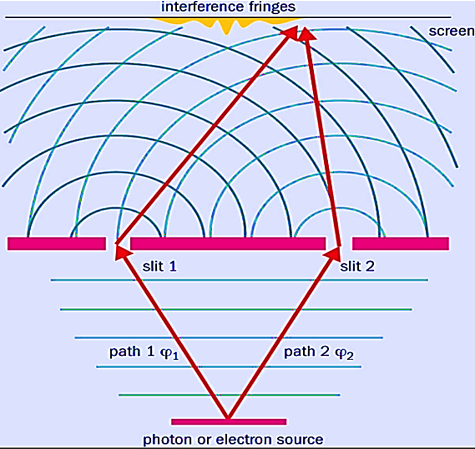Foundations of Quantum Computing: I-Demystifying Quantum Paradoxes
Quantum Mechanics
DOI:
https://doi.org/10.55672/hij2022pp76-82Keywords:
Quantum Mechanics, Quantum Computing, Quantum Paradoxes, Classical Mechanics, Wave Function, Principle of SuperpositionAbstract
Speedy developments in Quantum Technologies mandate that fundamentals of Quantum Computing are well explained and understood. Meanwhile, paradigms of so-called quantum non-locality, wave function (WF) “collapse”, “Schrödinger cat” and some other historically popular misconceptions continue to feed mysteries around quantum phenomena. Arguing that above misinterpretations stem from classically minded and experimentally unverifiable perceptions, recasting Principle of Superposition (PS), and key experimental details into classical notions. Revisiting main components of general quantum measurement protocols (analyzers and detectors), and explaining paradoxes of WF collapse and Schrödinger cat. Reminding that quantum measurements routinely reveal correlations dictated by conservation laws in each individual realization of the quantum ensemble, manifesting “correlation-by-initial conditions” in contrast to traditional “correlation-by-interactions”. We reiterate: Quantum Mechanics (QM) is not a dynamical theory in the same sense the Classical Mechanics (CM) is – it is a statistical phenomenology, as established in 1926 by Born’s postulate. That is, while QM rests on conservation laws in each individual outcome, it does not indicate how exactly a specific outcome is selected. This selection remains fundamentally random and represents true randomness of QM, the latter being a statistical paradigm with a WF standing for a complex-valued distribution function. Finally, PS is the backbone of a quantum measurement process: PS can be conveniently viewed as a composition of partial distributions into the total distribution – similar to classical probability mixtures – and is effectuated experimentally by the analyzer part of a measuring device.
Downloads
References
[1] A. C. J. P. o. S. Michalos, "Richard Feynman. The character of physical law. Cambridge, Mass.: MIT Press, 1965. 173 pp. $2.45," vol. 34, no. 2, pp. 194-194, 1967.
[2] J. Von Neumann, Mathematical foundations of quantum mechanics: New edition. Princeton university press, 2018.
[3] L. E. Ballentine, Quantum mechanics: a modern development. World Scientific Publishing Company, 2014.
[4] D. I. Blokhintsev, The philosophy of quantum mechanics. Springer, 1968.
[5] M. LI and L. po Optike, "Teorii Otnositel'nosti i Kvantovoi Mekhanike (Lectures in Optics, Relativity Theory, and Quantum Mechanics)," ed: Moscow: Nauka, 1972.
[6] K. V. Nikolsky, "Quantum Processes, Moscow," 1940.
[7] J. A. Wheeler and W. H. Zurek, Quantum theory and measurement. Princeton University Press, 2014.
[8] F. London, E. J. Q. t. Bauer, and measurement, "The theory of observation in quantum mechanics (1939)," pp. 217-259, 1983.
[9] D. Blokhintsev, "Statistical Ensembles in Quantum Mechanics," in Quantum Mechanics, Determinism, Causality, and Particles: Springer, 1976, pp. 147-158.
[10] M. Flato, Z. Maric, A. Milojevic, D. Sternheimer, and J. Vigier, Quantum Mechanics, Determinism, Causality, and Particles: An International Collection of Contributions in Honor of Louis de Broglie on the Occasion of the Jubilee of His Celebrated Thesis. Springer Science & Business Media, 2012.
[11] M. A. Bean, Probability: The Science of Uncertainty: The Science of Uncertainty with Applications to Investments, Insurance, and Engineering. American Mathematical Soc., 2001.
[12] R. Feynman and A. Hibbs, "Quantum Mechanics and Path Integrals. McGraw-Hill, New-York," 1965.
[13] A. Einstein, B. Podolsky, and N. J. P. r. Rosen, "Can quantum-mechanical description of physical reality be considered complete?," vol. 47, no. 10, p. 777, 1935.

Published
How to Cite
Issue
Section
License
Copyright (c) 2022 Hyperscience International Journal

This work is licensed under a Creative Commons Attribution-NonCommercial 4.0 International License.






 Google Scholar
Google Scholar  Crossref
Crossref  Scopus
Scopus  WorldCat
WorldCat  ORCID
ORCID  Scilit
Scilit  Mendeley
Mendeley  Internet Archive
Internet Archive 





